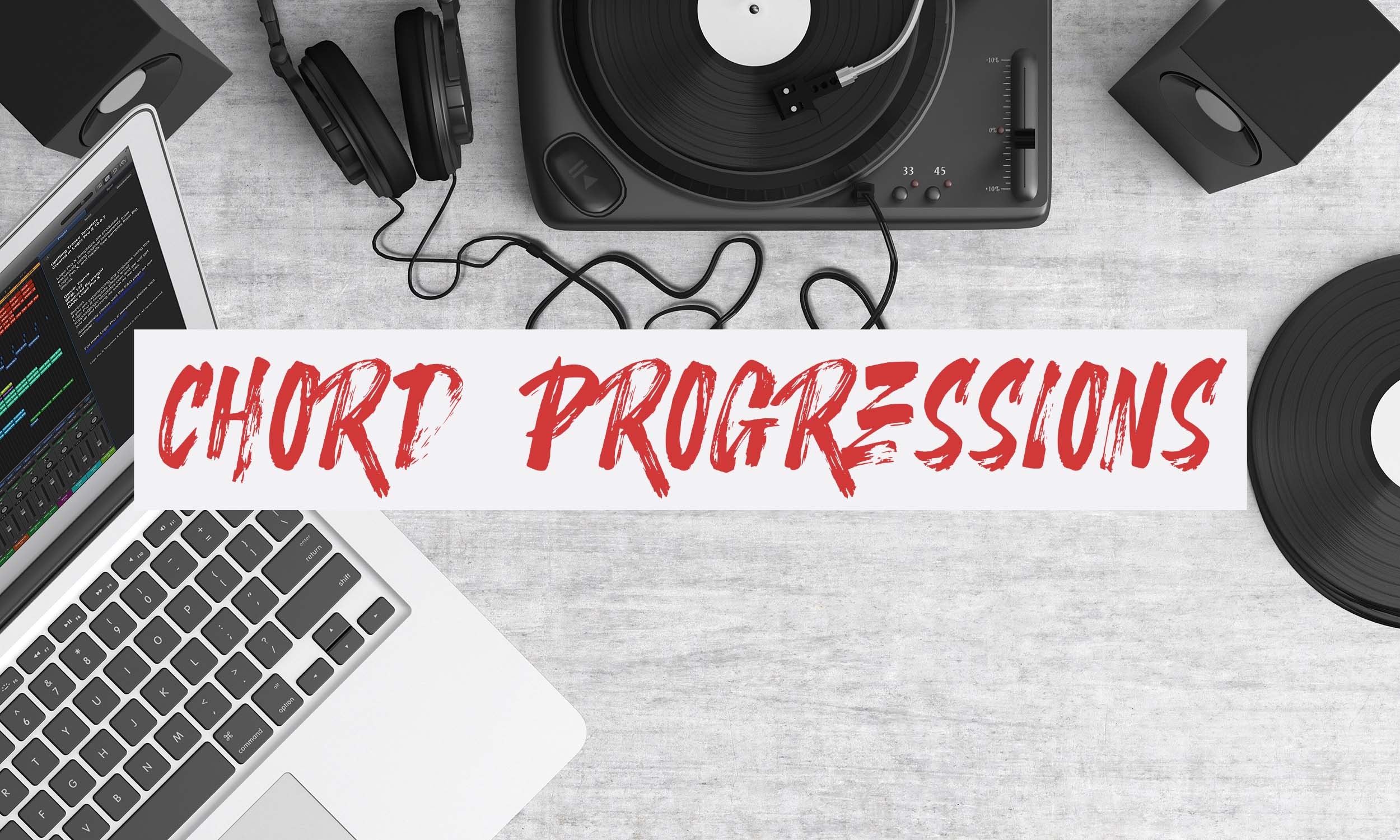
Your "cheat sheet" when it comes to chord progressions...
Writing chord progressions for your songs can sometimes feel daunting.
With endless possibilities how do you whittle it down to one progression that captures the feeling you are looking for and how can we tell which chords work well together?
Whilst it can seem like a tricky task there are ways to make the process a little easier on yourself.
It’s important to understand that there are common chord progressions throughout most genres.
These progressions are determined by the key of a song.
Once we understand this, we can have a look at these simple diagrams to help us pick and choose which chords are musically appropriate to string together.

In these diagrams, we number the chords in the Roman numeral system.
This way we can identify a progression easily whilst being able to interchange the chords that these numeral values represent.
We have broken it down into two diagrams.
The major key chord progressions and the minor key chord progressions.
These serve as a sort of “cheat sheet” when it comes to writing a song.
It’s important to remember that you don’t always have to play the chords from I through VII.
You are free to pick and choose the combination in which you play the chords.
You also do not have to play all of the chords listed in the key. You can play a minimum of two of them for it to count as a progression.
However, you must keep the I chord in mind as those are the root chords.
In other words the I chords listed vertically are the key in which the progressions are in and the chords that read horizontally in the same row are the chords available for that chosen key.
Got it? Great!
Major key chord progressions
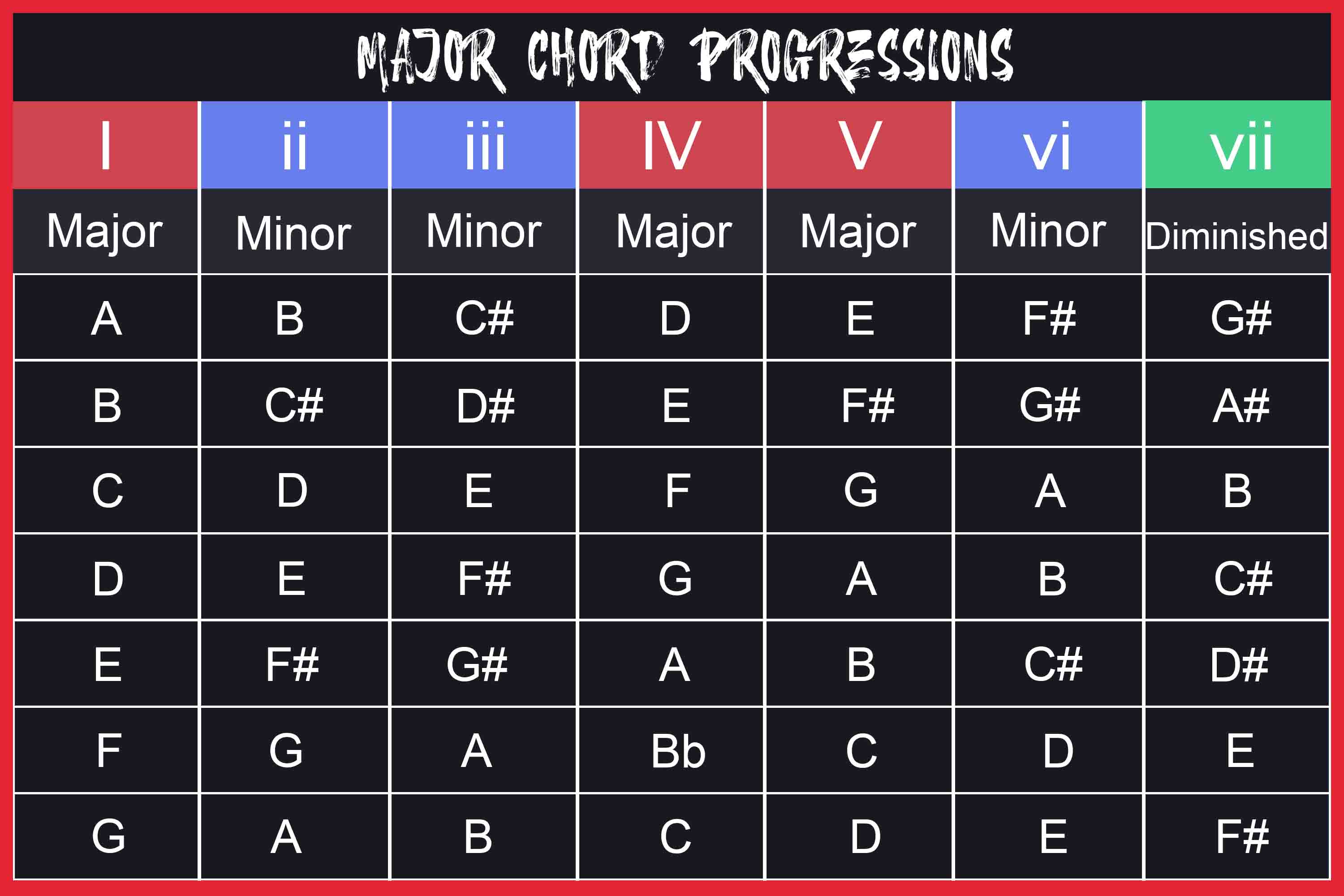
Minor key chord progressions
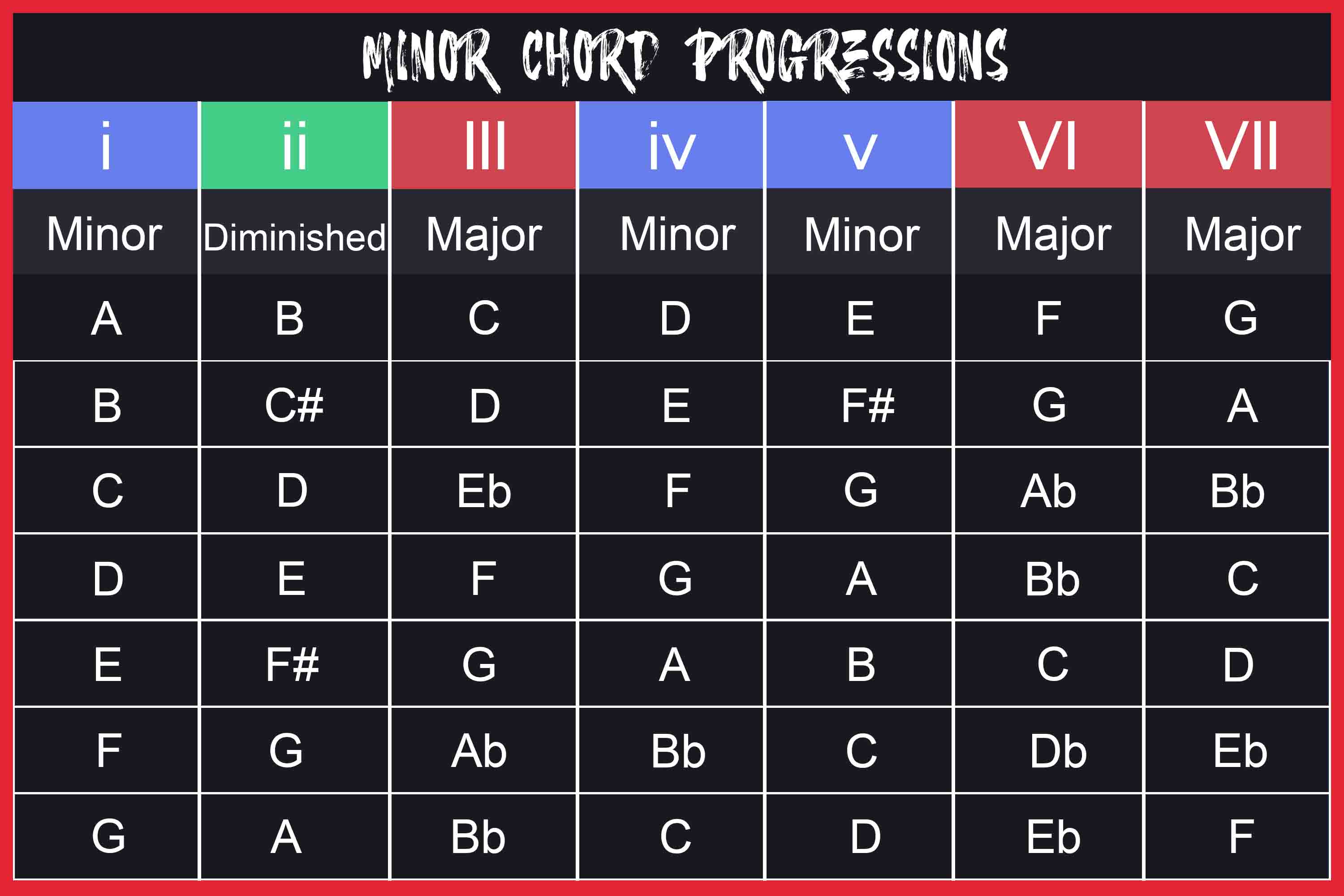
Take a moment to familiarize yourself with the above diagrams.
You can start to play around with them once you have a grip on how it all comes together.
If you feel like you need a little more guidance when it comes to creating you chord progressions then have a look below at commonly used ones to get the ball rolling.
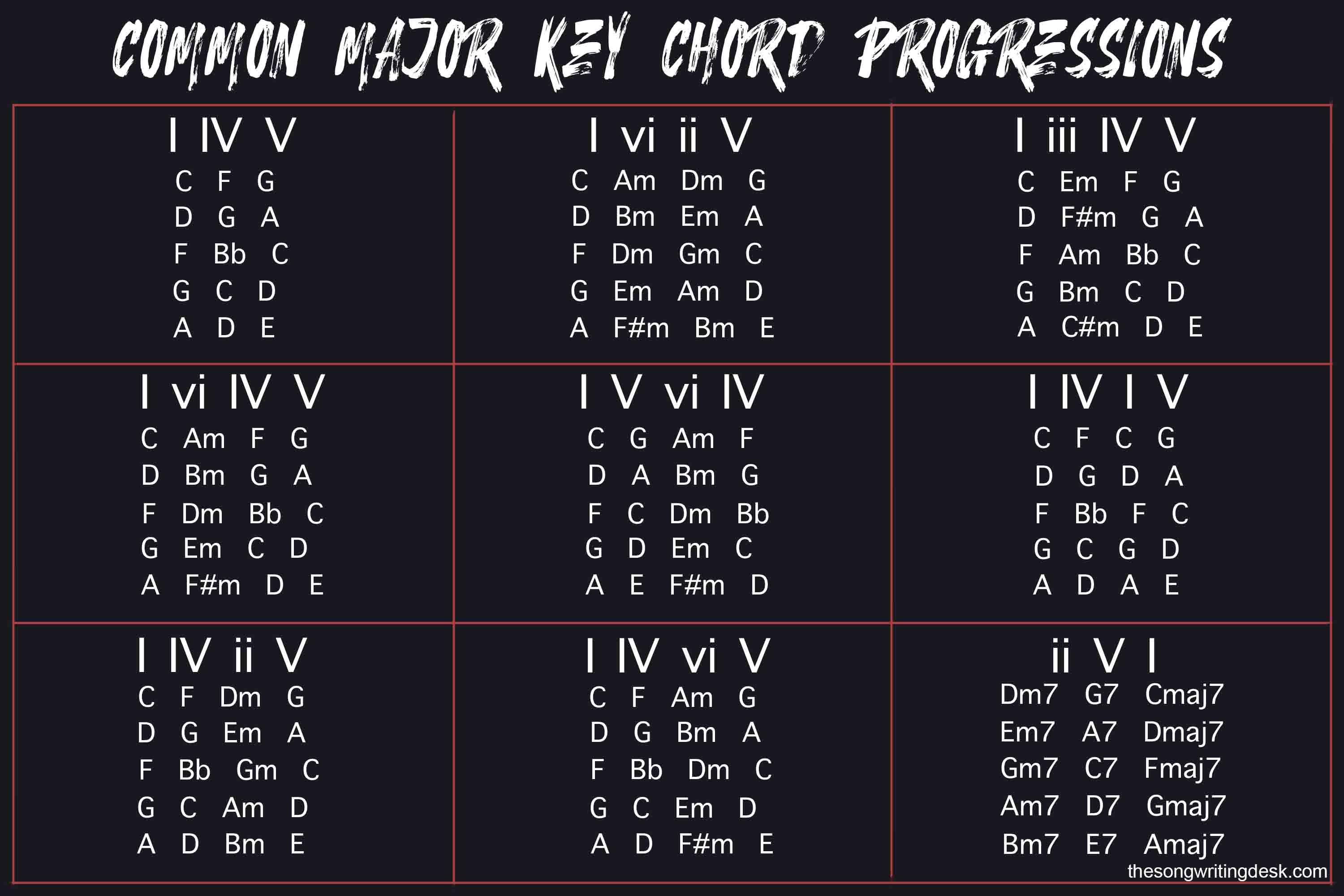
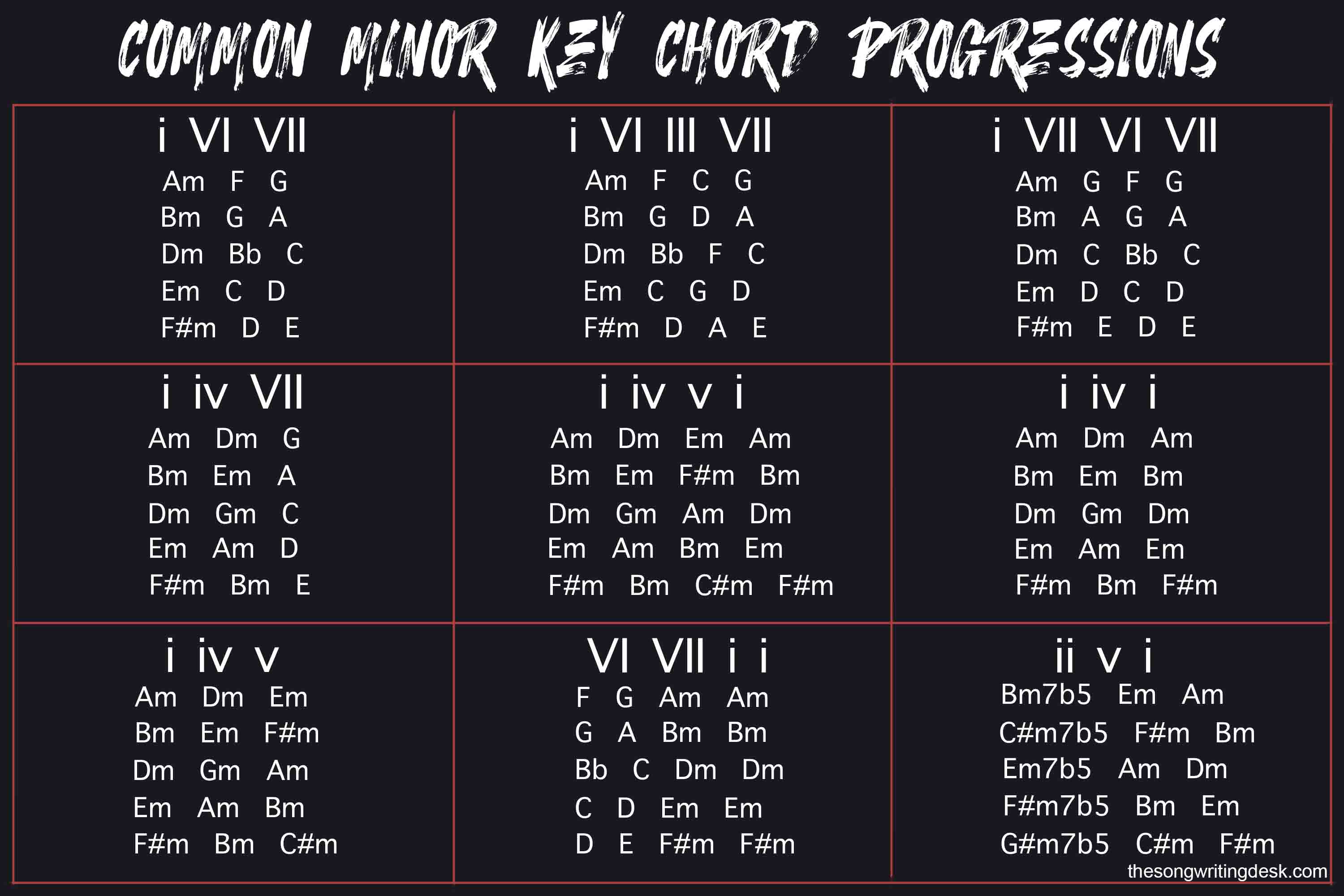
As you can imagine there aren't many progressions that haven't been played before.
It is important to remember that even though a progression you pick may have been used by another musician, the real artistry comes with how you use these chords to carve out a style that is completely unique.


